The trajectory of “The Miracle of Paint”
・・・・・・・・・・
Hello everyone, how are you all? This is Tanaka from GRIDFRAME.
<The trajectory of the “Miracle of Paint”>
On Saturday, October 27th, we held the 3rd Paint Miracle @ Pakuchi Bank event. Once again, many people participated who wanted to try painting a large iron plate.


The iron plates that were painted last April and were on display at SOTOCHIKU Art Park Kyonan Yabugatani, exposed to the rain, have now been harvested, having become a part of nature. Once again, the nature of Kyonan Town has nurtured the painted iron plates into attractive SOTOCHIKU materials. Where and in what spaces will these paint miracles be used from now on? We hope you will enjoy them.
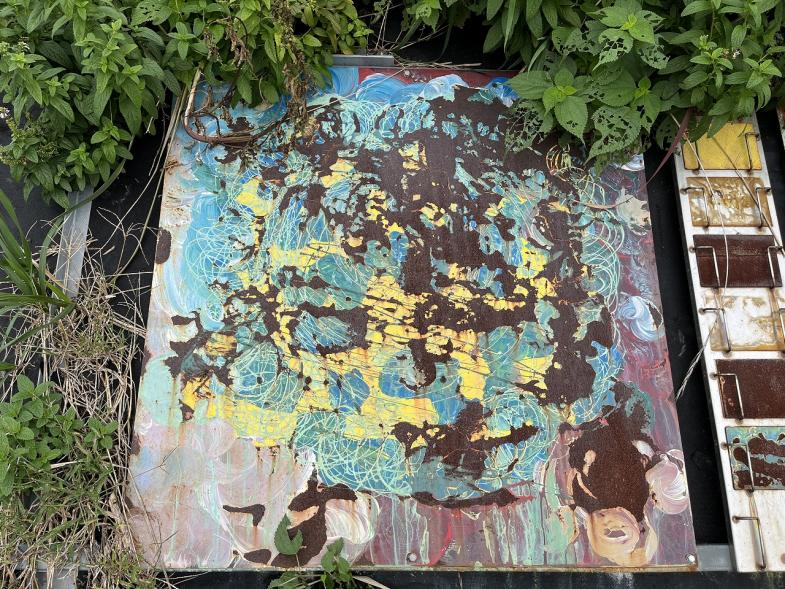

Recently, Paint Miracle’s spatial achievements have been gradually increasing, and we have had more opportunities to receive questions from various people, such as “What was the trigger for starting this?” and “What is your concept?” This time, I would like to answer those questions…
1. My encounter with Kunihiro Takuma’s photo book “REBIRTH”
In the fall of 1991, I came across Kunihiro Takuma’s photo book “REBIRTH.” It was a collection of photographs that focused on the traces of changes that had occurred on walls, doors, and other surfaces over the years, for various reasons, since they had been painted.
This is a very important photo book to me, and to my life. The reason for this will become clear as you read on.


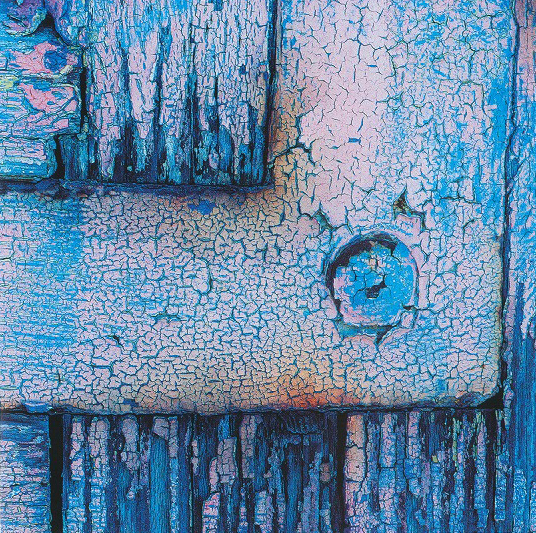
In the fall of 2020, I sent my first ever fan letter to Takuma-san via email. Nearly 30 years had passed since I bought his book.
…..
Kunihiro Takuma
nice to meet you
My name is Toshio Tanaka, and I am the CEO of Grid Frame, a space design company in Tokyo.
I don’t remember ever writing a fan letter in my life, but this email might be it.
My first encounter with Takuma’s photographs dates back to 1991.
At the time, I was working in the civil engineering department of a general contractor, and when I expressed my desire to study architecture to the company, I was offered the opportunity to study at a graduate school in the United States. Before leaving the country, I was looking for books I could buy in Japan, even though I had no knowledge of architecture.
I remember seeing a small article in Brutus magazine introducing a photo book called “REBIRTH” and seeing close-up shots of rusty door hardware, so I immediately went to the bookstore to buy it.
For me, it was a book on architecture.
In the end, I sent three photo books from Japan, but the only one I opened while studying architecture in the US was “REBIRTH.”
I studied architecture in Buffalo, New York, a cold town that had prospered from its steelworks and then fallen into disuse, and the whole town felt like a scrapyard.
Most students hated Buffalo, but for me it was the best place to learn.
In fact, there were many scrap metal yards, and I loved going to scrap metal yards and rummaging through piles of scrap metal to find materials for architectural models.
So, while searching for that image of “REBIRTH,” my curiosity turned into a spirit of inquiry, and it took shape.


I have included a portion of the paper I wrote at the time on the “ORIGINAL CONCEPT” page of the grid frame (the word “REBIRTH” appears at the beginning).
https://gridframe.co.jp/original-concept/
I have always aimed to create spaces using materials that have been modified by time, like those in “REBIRTH.”
However, more than 20 years have passed without us being able to establish a method for collecting such materials.
However, I have finally come to this point and built a material collection system called SOTOCHIKU, which will serve as a foothold, and I feel like I can now move forward with what I really wanted to do.
Looking back, I believe that the reason I can live with hope like this is because Takuma’s “REBIRTH” gave me the push I needed.
I am deeply grateful
I sent this email to let you know that there are people like this.
It’s starting to feel a bit like autumn these days.
Please take care of yourself.
September 13, 2020 Toshiro Tanaka
・・・・・・・・・
To Mr. Tanaka
Thank you for your wonderful email!!
I was surprised to find that some people knew about the legendary photo book “REBIRTH.”
That photo book was self-published, but
only 250 copies were sold, resulting in a loss of several million yen (laughs).
Tanaka is one of the 250 people who purchased the book.
Thank you for introducing us on Grid Frame’s “ORIGINAL CONCEPT” page .
In fact, in 2017, I published a new photo book of “REBIRTH” titled “The Miracle of Paint,” adding new photographs.
I wanted women to read it, so I gave it a cute title, but
it didn’t sell (lol).
Well, it’s like a gift to myself.
I will send a copy of “The Miracle of Paint” to Tanaka-san as a thank you for this email,
so please look forward to it.
The colors are beautiful because we were able to reproduce colors that were not possible before through digital processing.
Thanks to Tanaka’s email, I’m touched to realize that there are definitely
people out there who like my core worldview .
Thank you so much for this wonderful email.
I look forward to meeting you someday.
September 14, 2020 Kunihiro Takuma
…
Then, on October 7, 2020, I had the opportunity to meet and talk with him face-to-face via Zoom. For the first time, I understood the feelings of fans who go to meet someone they admire.
Takuma said, “I feel like I’ve traveled back in time.” He also commented on our SOTOCHIKU project, “You’re trying to do in three dimensions what I’ve done in two dimensions. It’s amazing.”
That was the exact moment the engine started.
Furthermore, Takuma even said, “Please feel free to use any of my photos from ‘The Miracle of Paint’ or anything else you like.”
2. “Miracle of Paint” Project
Later, I met up with Saya Kyo again in Kyonan Town, where we decided to open a cafe and SOTOCHIKU showroom called “Pakchi Bank.” I was immediately given the title for the photo book and came up with the idea of starting a project called “Miracle of Paint.”
The photo book “The Miracle of Paint” is a guide to SOTOCHIKU materials. The way paint is repeatedly applied and then peels over time is undoubtedly fascinating. It is the ideal SOTOCHIKU material.

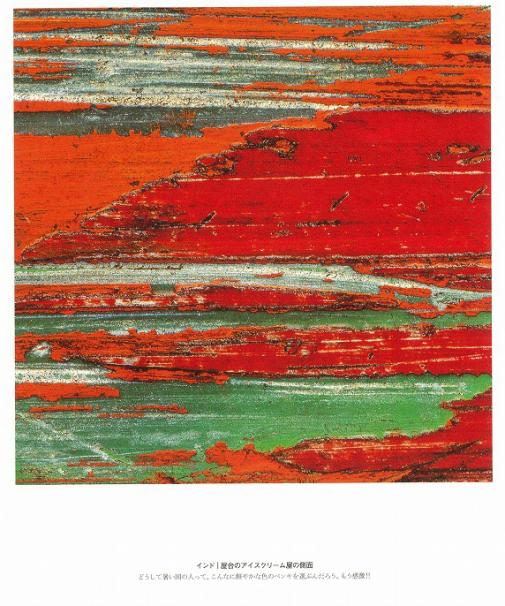
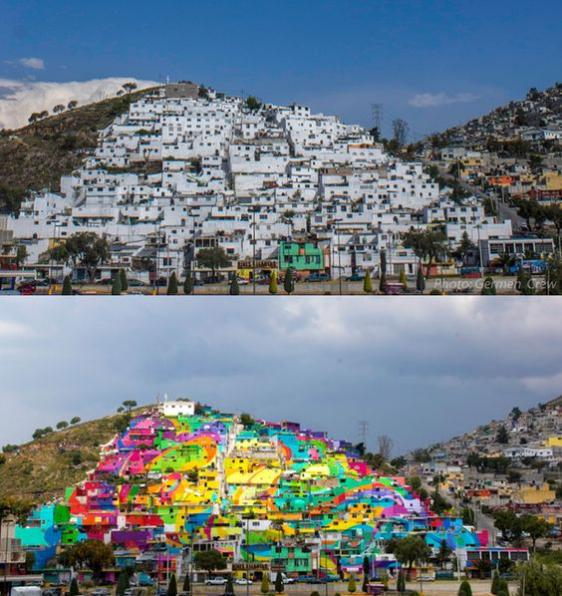
However, many of the subjects for “The Miracle of Paint” are overseas. Why? Because Japanese homes are mostly finished with mass-produced factory siding that requires no maintenance. Even seaside warehouse districts are mostly dull colors like white or beige, and colorful colors are almost never used. In contrast, there are many countries overseas that prefer colorful paints, so the subjects are often found in those countries.
Making a town colorful can also help revitalize the entire town. The photo above right shows a painting project in the town of Bachuca, Mexico. By having artists paint the walls of buildings in colorful colors, the town has seen an increase in tourists and a significant drop in crime rates. (Photo by MENTAL FLOSS)
So, I wondered if it would be possible to create a colorful town in Japan filled with paint. When I tried to visualize such a place, Kyonan, a seaside town, seemed the perfect choice. This is because the sea breeze changes the painted surface. I was sure that the natural world of time would work its magic on the walls and fences that had been painted by humans, creating a one-of-a-kind landscape.
Of course, there must be colorful landscapes in Japan that are uniquely Japanese. By refining our sense of “wabi-sabi,” which discovers beauty in things that have been affected by the natural process of time, we may be able to create landscapes that continue to fascinate us.
This would make walking around the town more enjoyable. People would want to go there and spend time there. It could even play a part in revitalizing the town.
At GRIDFRAME, we can also use materials with weathered painted surfaces as SOTOCHIKU materials to create new spaces.
3. The front wall of Pakchi Bank
First, we attached steel plates that GRIDFRAME had freely painted to the front wall of Pakchi Bank. After being exposed to the sea breeze and rain of Kyonan for several months as an exterior wall, they were collected as SOTOCHIKU materials, and this cycle was repeated, with the fourth generation steel plates now attached. These painted miracle steel plates have been used to create spaces in Tokyo and Kanagawa.
The first thing that catches the eye of people getting off at Yasuda Station is this painted Miracle Iron Plate. The intention is for people to enjoy the change as part of the town’s scenery.
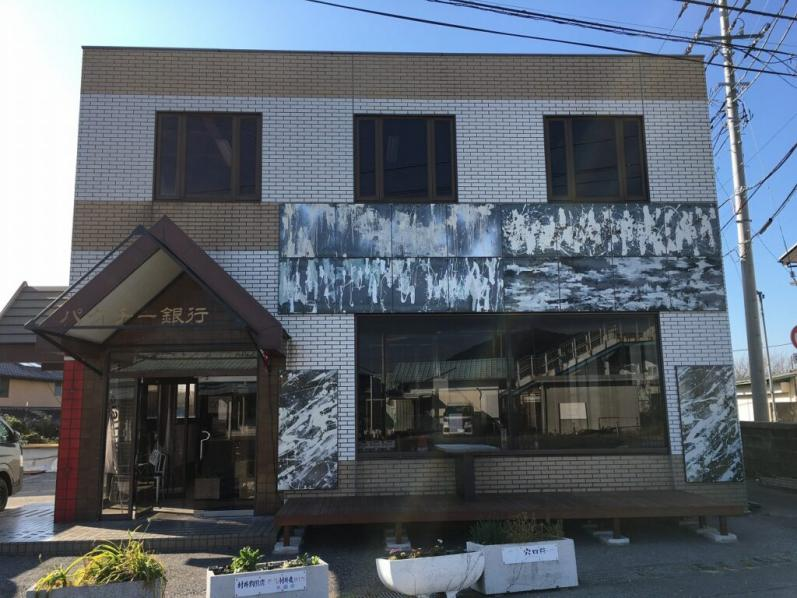
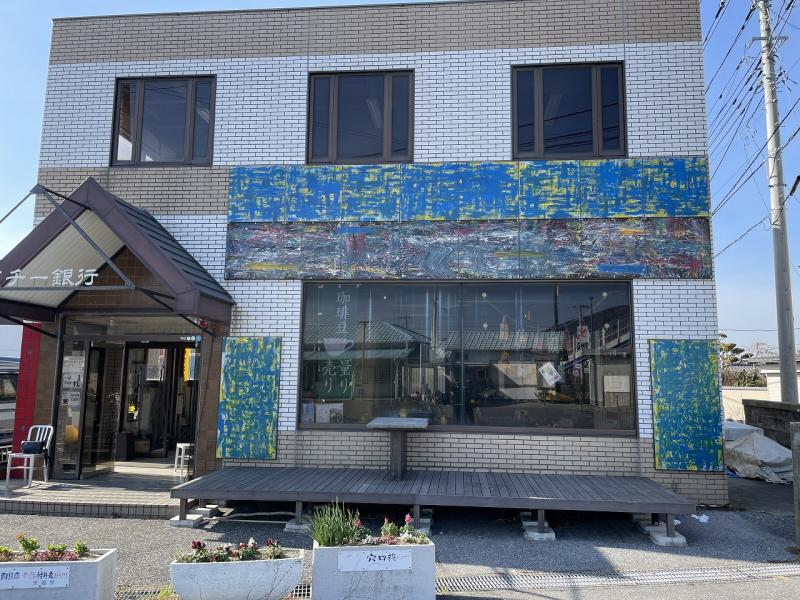
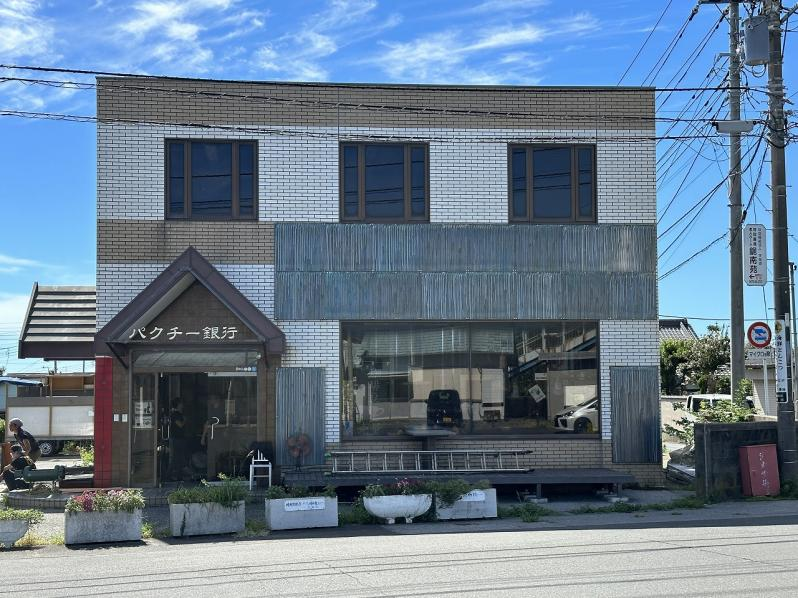
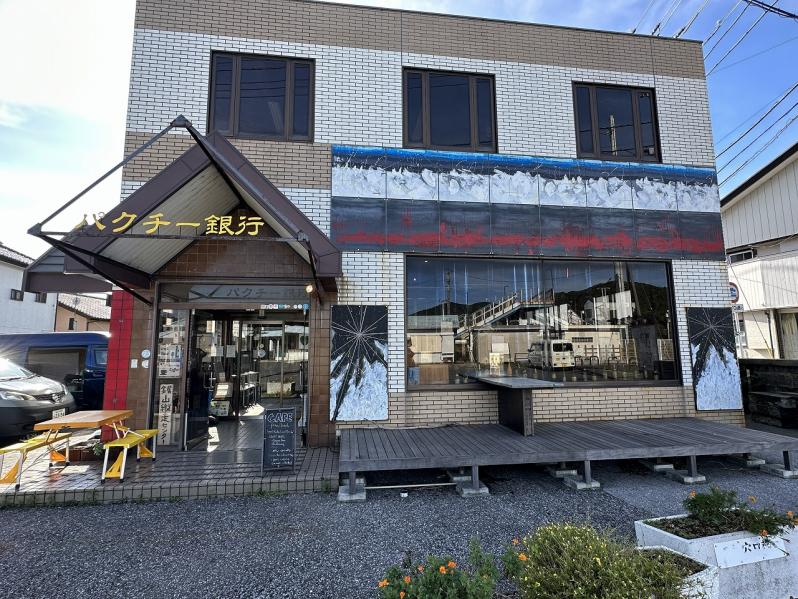
4. Event “Paint Miracle @ Pakuchi Bank”
An event where people who want to freely paint large iron plates gather at Pakchi Bank will start on November 25, 2023, and the event mentioned at the beginning is the third one.
It’s like a cycle of sowing seeds, growing them, and harvesting them over and over again. By painting the steel plate, the way the rust seeps into the surface evokes the feeling that the steel plate is blending into nature, and the space created using this material also feels as if nature is infiltrating it. (There are also examples of this construction introduced in Vol. 6 and 7.)

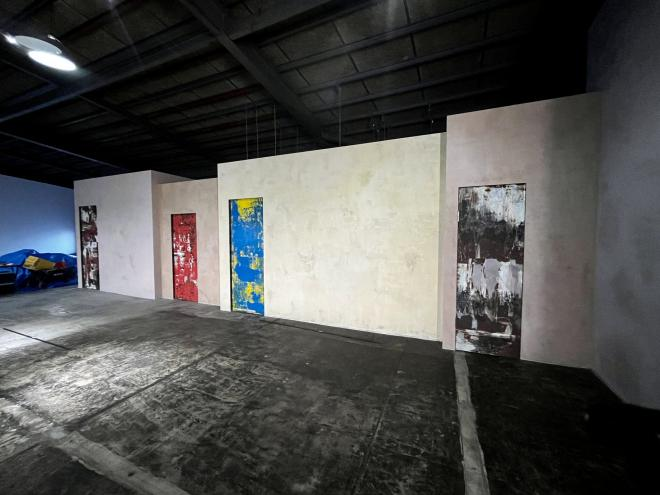
I think that a colorful landscape that is appropriate for Japan would be one that gives a sense of nature, such as this color state.
<The abandoned cats of Noto>
Staff member M participated in various volunteer activities in Oku-Noto from October 19th to 30th, including house cleaning after the floods, animal rescue, transporting relief supplies, rescuing old wood, and removing mud from gutters.
Below is a report from Mr. M about the animal rescue.
….
The floods caused more damage than the earthquake, with roads in mountainous areas and along the coastline being buried or collapsed by landslides, cutting off access to settlements and leaving many areas where recovery has yet to be completed.
People have evacuated to temporary housing, turning the village into a ghost town, leaving pet cats, stray cats, and community cats behind. Perhaps due to the loneliness of the elderly residents in this small rural village, there are a number of cats that would be unthinkable in a city.

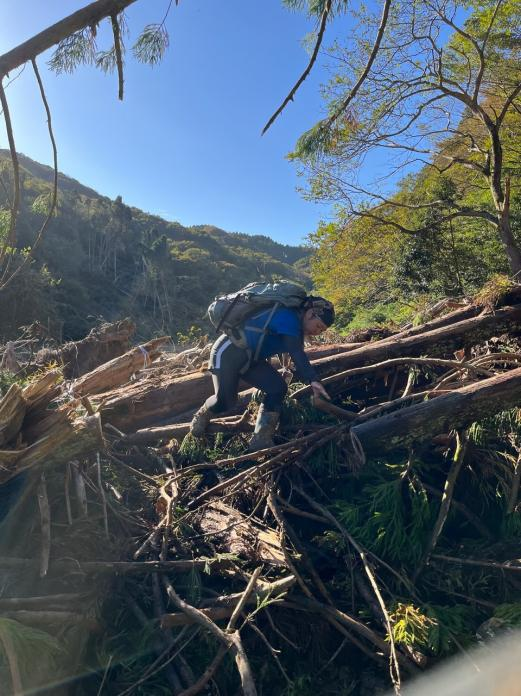

It is true that people should be responsible for the cats they keep, but there is no doubt that having cats in a community and them flocking to you when you feed them is a soothing experience, so it is inevitable that this will end up happening.
The actual activities were quite tough. The road had collapsed, so we had to hang ropes from guardrails and descend, and we had to move sideways along ropes to get over a landslide about 30 meters wide…I thought it might be dangerous for someone without mountain climbing experience. (Note: M-san likes mountain climbing.)
After about two hours, we arrived at the isolated village, which had become a ghost town, where hungry cats came calling. Dogs were apparently being taken into temporary housing or looked after by animal welfare organizations.
Just like cleaning flooded houses, specialized private volunteers also deal with pet issues during disasters. There doesn’t seem to be anyone to do this during the snowy season, so I’m thinking of participating in animal rescue when I go on a business trip to Noto
.
<Challenge to restore the space destroyed by the Noto Peninsula earthquake>
As I announced in the previous issue, I tried to create prototypes in Tokyo of things I wanted to make in Oku-Noto.
As I wrote before, I feel it is important to preserve as much as possible of the things destroyed by the earthquake, which radiates such strong energy, as they carry on the soul of the land. I wanted to imagine taking the things destroyed in the earthquake that I found beautiful and using them as motifs to preserve them.
As I have mentioned many times in this newsletter, it is the large roof that collapsed in the earthquake. In Vol. 9, I wrote that it “undulates like the back of a dragon, and gives the impression of a dynamic movement that could rise to the heavens at any moment, as if a vehicle were waiting to transport passengers to the future.” I find this shape, with many overlapping waves, beautiful.

In order to express the dynamic movement of the undulating tiles, I originally thought about creating a tile bench over 5m long in a place where broken objects from the earthquake in Oku-Noto pile up. However, due to space restrictions, I was unable to create a long bench for this prototype, and I decided that it would be difficult to convey the essence of what I was trying to do, so I created an image of the bench based on a photograph I had taken earlier in Oku-Noto.
First, we used AI to redraw the surroundings of photos of the earthquake disaster taken in Oku-Noto, creating a virtual place like the one on the left. If we leave this place alone, it will simply be cleared away like the one on the right. Nothing will remain that remembers time.
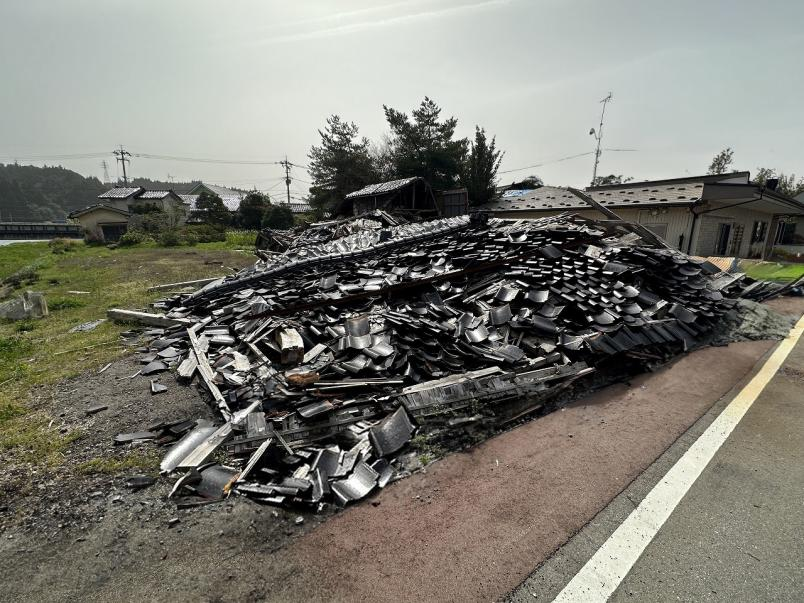
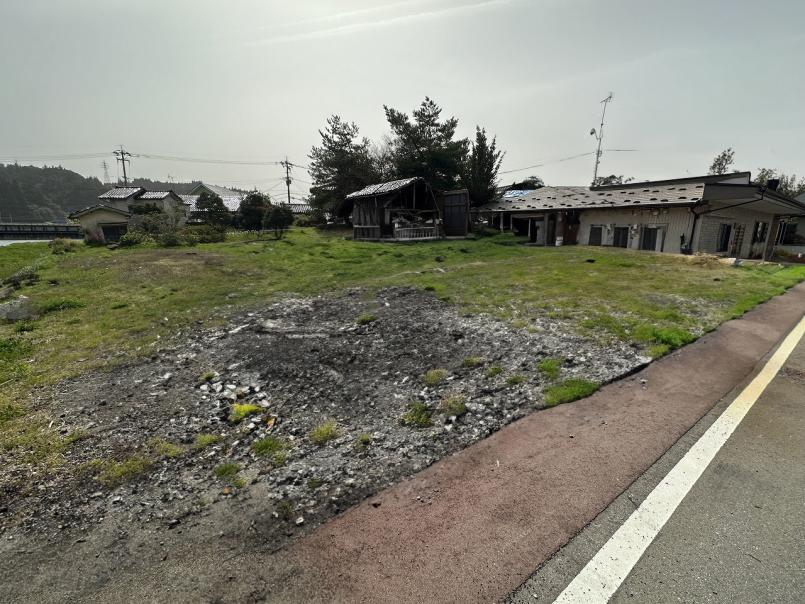
Currently, the complete demolition of damaged buildings is progressing one after the other. Of course, it is a good thing in the sense that the land cannot be used for any other purpose if it is left littered with destroyed objects, but as I have said before, unless we can turn the negative view of damaged objects into a positive one by “transforming the narrative” and protect even the smallest of objects that serve as a memory of time, I feel that the result will be inevitable: damaged objects will be swept away like garbage, and replaced with buildings that have no soul.
I think it’s enough to have only a small amount of broken things to carry on the memories of time. So, as shown on the left, I would like to erect a steel plate fence about 90cm high on the part facing the road, and use only the broken things that protrude from it onto the road side. The rest will wait to be dismantled. I’m thinking of using special steel plates, but I’ll talk about that later.
Then, as shown on the right, two rows of tile benches will be installed in a curve like an undulating wave, among the broken objects. People passing by can sit on the tiles and take a break. It would be nice to ride on the back of a dragon and have a pleasant conversation.
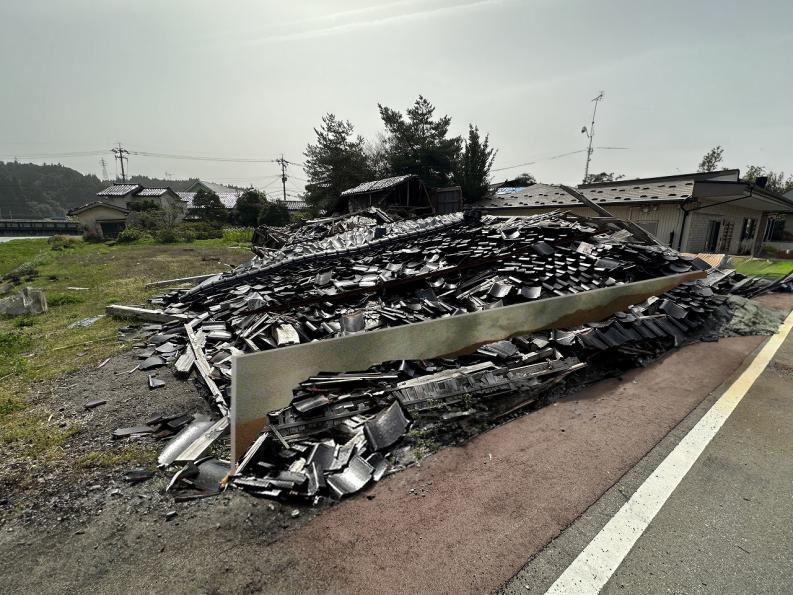

Once dismantled, it will look like the image on the left. To ensure that it continues to exist for a long time, it must not be in danger, so everything except the bench will be protected by a GRIDFRAME structure, as shown on the right. Even if a new building is constructed behind it in the future, this bench will remain here, passing on the memory of the time before the earthquake to future generations.
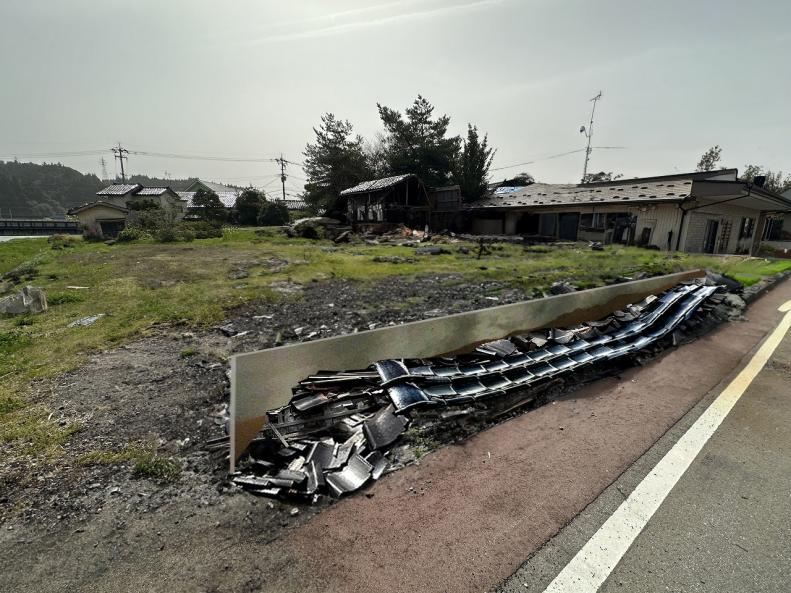
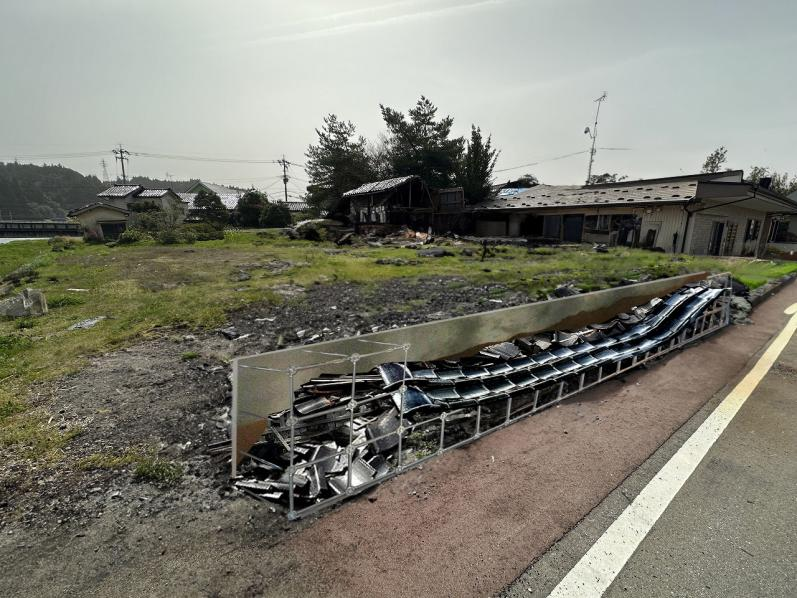
The iron fence is made of iron plates that have been dyed with what we call “sea dyeing,” which means that they have been dyed to resemble the fleeting shapes of ocean waves.

Earthquakes are also waves, and so the curves made by the broken tiles also resemble waves. By copying the shape of waves from the sea, which symbolizes the beauty of Noto, and superimposing it on the wave shape of the tiles, we hope that people will appreciate the beauty of broken things being passed down from the past to the future.
I have now explained the image of what I would like to create in Oku-Noto. As I have written so far, it is not possible to actually create something without facing the broken object one-on-one and working on “narrative transformation.” This is because anything that has a predetermined way of making it has no soul. Therefore, something will not be created according to this image.
The tile bench we created at the GRIDFRAME showroom in Omotesando was created under very different conditions from the concept above, and is a completely different thing, but I think it is still something that you can quietly enjoy. If you are in the area, I would be delighted if you would take a seat on the bench.
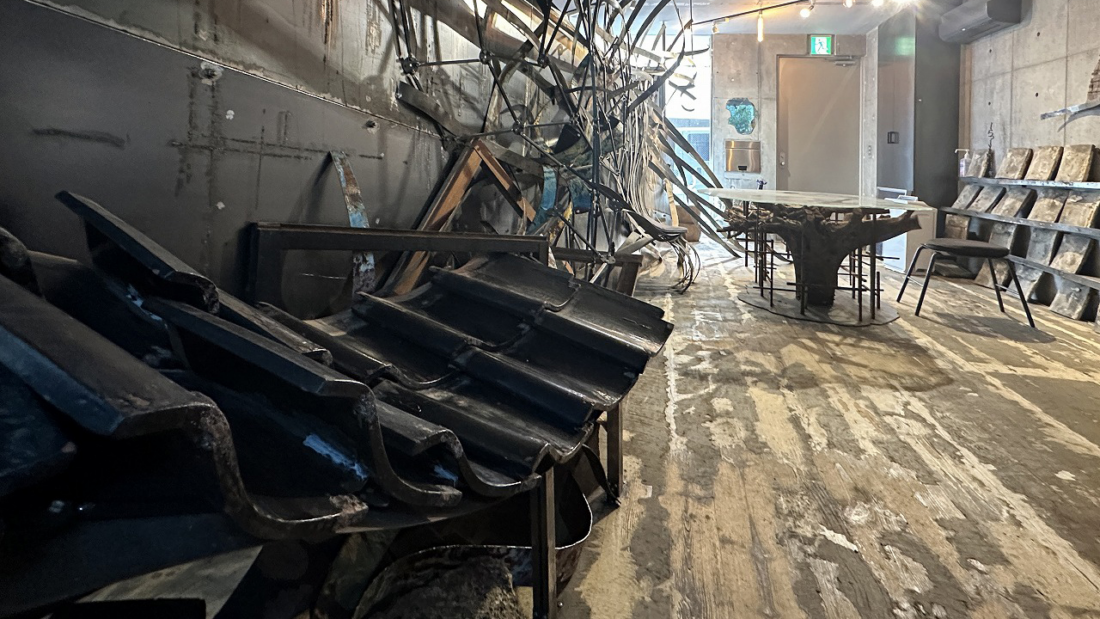
The only message we want to convey to the people affected by the disaster in Oku-Noto through this bench remains that “among the things destroyed by nature, there are things that are beautiful precisely because they are broken.”
And if I recall, as a child, I dreamed of sitting on a roof.
I believe it is very healthy to see the things that nature destroys as natural materials, to enjoy them, and to use them for the future. If we can look at broken things with such a positive perspective, we will increase the chances that the space that houses the soul and the souls of the people who live there will be preserved for the future.
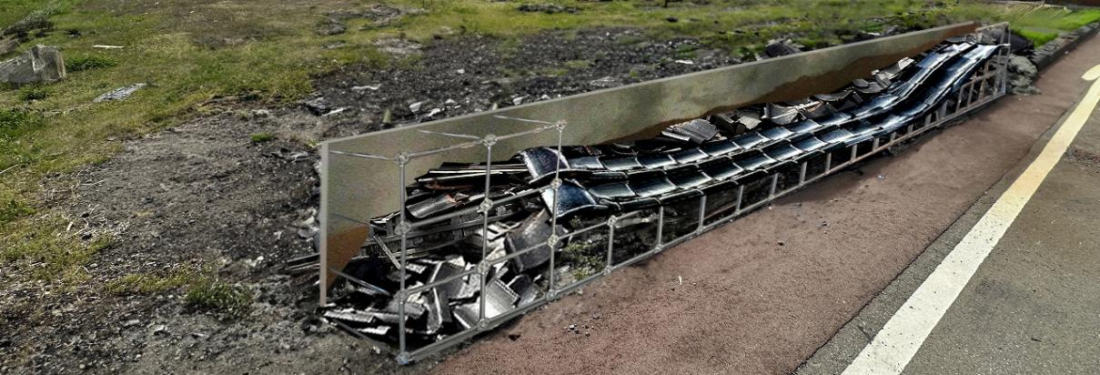
Finally, the GRIDFRAME structure has two roles: to “impart order to areas where there is excessive disorder” and to “shape fragmented objects into the desired shape.” It is a structure that can be placed over broken, fragmented objects to bring them together.
From an age of division to an age of resonance. I feel that the need of the times is not to immediately eliminate broken things, but to pass on broken things to the future if they resonate in some way.
In the next issue, we will continue to tell you about SOTOCHIKU’s various activities.
October 31, 2024 GRIDFRAME Toshiro Tanaka

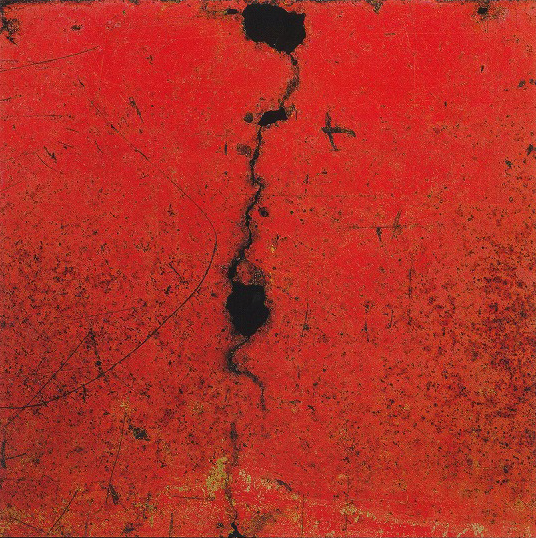
Comments are closed